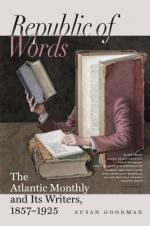Ruskin, in his pamphlet on Pre-Raphaelitism, has drawn such a comparison between Turner and the Pre-Raphaelites as to make them only different manifestations of the same spirit in Art. Nothing, it seems to us, could be more mistaken than this; for, in all that concerns either the end of Art or its paths of approach, its purposes or its methods, Turner and the Pre-Raphaelites are diametrically opposed. Turner was intensely subjective,—the Pre-Raphaelites are as intensely objective. There is no evidence whatever in Turner’s works that he ever made the slightest attempt to reproduce Nature in such guise as the Pre-Raphaelites paint her in; on the contrary, the early drawings of Turner are as inattentive to absolute truth of detail as they could well be. His course of study was one of memory. He commenced by expressing in his drawing such palpable facts and truths as were most strongly retained, and in which he conveyed the great impression of the scene, with the most complete indifference to all facts not essential to the telling of his story. From this, as his memory grew stronger and his perception more minute and comprehensive, he widened his circle of ideas and facts, always working from feeling rather than from what Nature set before him. His mind thus sifting his perceptions, retaining always only those which constituted the essential features of the impression, and with a distinctness proportioned to their relative importance, there necessarily resulted a subjective unity like that of an absolute creation. The Pre-Raphaelites, on the other hand, endeavor to paint everything that they see just as they see it; and doing this without permitting the slightest liberty of choice to their feeling, where they have feeling, their Art is, of course, in all its early stages, destitute of that singleness of purpose which marked Turner’s works from the beginning. Turner felt an emotion before Nature, and used the objects from which he had received the emotion as symbols to convey it again;—the Pre-Raphaelites look at Nature as full of beautiful facts, and, like children amid the flowers, they gather their hands full, “indifferent of worst or best,” and when their hands are full, crowd their laps and bosoms, and even drop some already picked, to make room for others which beckon from their stems,—insatiable with beauty. This is delightful,—but childlike, nevertheless. Turner was, above all,




